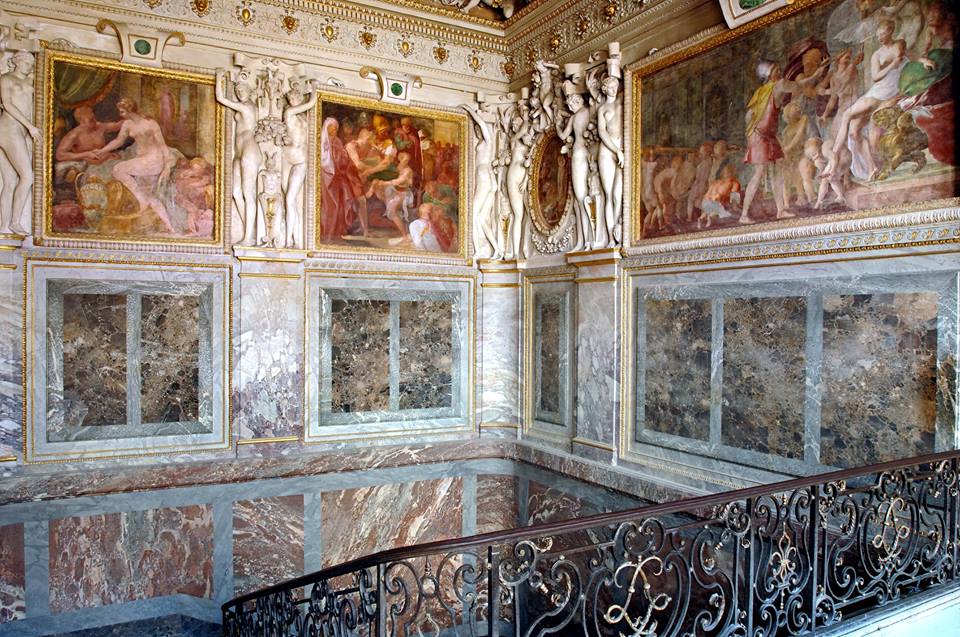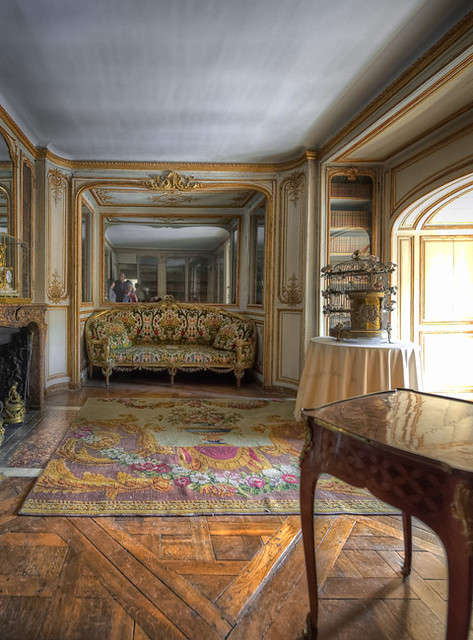After the death of Louis XV Madame du Barry obviously no longer had a position at court. A couple of years later she lived at her château of Louveciennes where she experienced an unpleasant surprise.
On 11 January 1791 Madame du Barry returned to her estate at the news of a robbery. At her arrival she found her beloved jewels and jewellery lost and her bedroom ransacked - even the Sèvres medallions had been smashed. It is reported that the former favourite wept at the sight of it.
But how could a robbery even happen at a château where numerous servants where still staying? There was a number of factors that all contributed to the success of the daring robbery. First of all a Swiss Guard in the du Barry's employment had left his post to go drink with his friends in the nearby village hereby leaving his post unattended. Secondly, Madame du Barry had specifically ordered a servant of hers to sleep in a bedroom right next to her own in order for him to be close if anything happened; however the servant had chosen not to follow the order. Combined this meant that really no one was anywhere near the former favourite's bedroom.
The next mourning a ladder was discovered outside Madame du Barry's bedroom window explaining how the thieves managed to get to her apartment.
A man by the name of Morin was Madame du Barry's trusted man-servant and it was he who immediately contacted the Hôtel de Brissac (where Madame du Barry was staying) and then the police in the towns of Versailles and Louveciennes. Also, the jeweller Jean Joseph Rouen was called upon to carry out a detailed list of the jewels missing - he had a thorough knowledge of the precious belongings of the former favourite. The finished list took up eight full pages! A reward on 2.000 louis was offered and considering the lack of money at the time it was an enormous sum.
But none of those involved had ever thought of the impression the circulation of the list would leave. At a time when most nobles kept a low profile and the revolution was already rolling, the list only reminded the public of the vast wealth of the former King's mistress.

On 15 February a new message arrived for Madame du Barry, this time from London. The jeweller Nathaniel Parker Forth who had caught four people in possession of what seemed to be her jewellery. However, it was not Nathaniel Parker Forth (an untrustworthy character) who had actually found the missing jewels but Baron Lyon de Symons (a far more honest character). Symons had been approached by one of the very thieves and had just happened to see a notice of the robbery at the French embassy - his honest character moved him to contact Nathaniel Parker since it was a well-known fact in London that he worked as an "agent" for Madame du Barry. Symons had already paid 1500 pounds as a deposit and wanted Nathaniel Parker (as acting for du Barry) to remedy this gamble but Nathaniel Parker had never even heard of the robbery and refused to pay anything.
But Nathaniel Parker knew when he could claim a profit and also knew that Symons was too shy a man to reveal the thieves' identities themselves. Consequently, he wrote to a friend at the French embassy to get filled in on all the details of the robbery. But he did not find a helpful hand there and was simply told that the ambassador knew no more of the case. Nathaniel Parker was not that easy to stop and had the five thieves imprisoned in the notorious Newgate prison. Later on it was only the Englishman Joseph Harris who confessed to the robbery.
Madame du Barry and Jean Joseph Rouen travelled across the Channel on 19 February and after a meeting with the English and French lawyers and jewellers, Madame du Barry was reconciled with her precious jewels. Sadly, the Comtesse would not enjoy her rediscovered jewellery for long and just two years later she was beheaded.


















